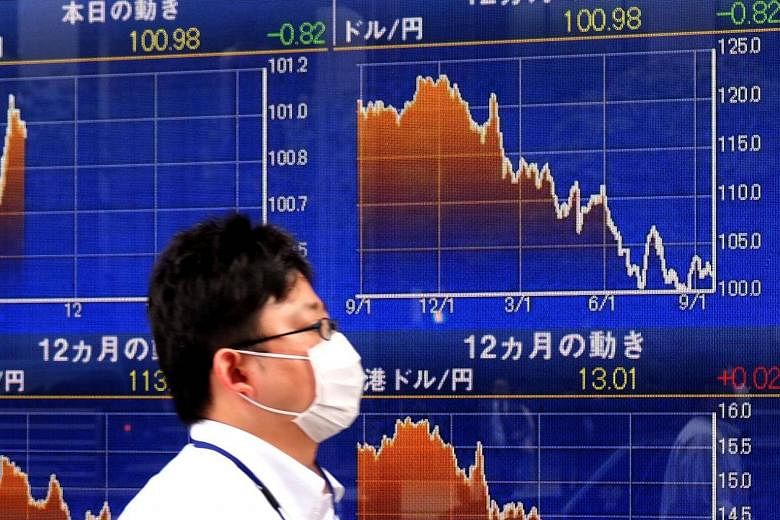SYDNEY (REUTERS) - Asian markets were set for a rough ride on Thursday (Dec 15) after the Federal Reserve raised rates for the first time in a year and hinted at the risk of a faster pace of tightening than investors were positioned for.
Yields on short-term US debt surged to the highest since 2009, sending the US dollar to peaks not seen in almost 14 years.
Wall Street suffered its biggest percentage decline since before the Nov 8 US presidential election, though the loss was slight compared with gains of the last month or so.
The Fed's rate rise of 25 basis points to 0.5-0.75 per cent was well flagged but investors were spooked when the "dot plots" of members' projections showed a median of three hikes next year, up from two previously.
Fed chair Janet Yellen was quick to play down the shift saying only "some" policy makers had changed their forecasts and emphasised the outlook was "highly uncertain".
The plots hardly shouted of an urgency to tighten. The median projection was for 1.4 per cent at the end of next year, 2.1 percent for 2018 and 2.9 per cent at end 2019.
Dealers also noted that this time last year the median call was for four hikes in 2016.
Still, investors had bet heavily on a more dovish message and many positions were quickly unwound.
"The fact that the market, including me, was leaning the wrong away exacerbated the move," said Steven Englander, Citi's global head of forex.
Fed fund futures slid to imply around a 50-50 chance that rates would be between 1.25 and 1.5 per cent by the end of 2017. The market is pricing in 57 basis points of hikes next year, up from 40 basis points ahead of the meeting.
Yields on two-year Treasury paper jumped 10 basis points to 1.27 per cent, the biggest daily increase since early 2015 and the highest level since August 2009.
It also took the premium Treasuries pay over German two-year debt to its fattest since 2000.
That jump could suck more funds out of emerging markets and will be taken badly by stocks and currencies across Asia.
The US dollar was already up across the board, hitting a near 14-year peak against a basket of currencies at 102.100. The euro skidded 0.9 per cent to $1.0528, while the dollar climbed 1.6 per cent on the yen to 117.02.
The drop in the yen could cushion Japanese stocks and Nikkei futures were still trading slightly firmer.
Other Asian markets were unlikely to be so lucky and dealers expected losses across most bourses.
Citi's Englander said attention would be on the Chinese yuan with the risk a sharply lower opening fix could add to pressure for a competitive depreciation from other Asian currencies.
On Wall Street, the Dow ended Wednesday down 0.6 per cent, while the S&P 500 lost 0.81 per cent and the Nasdaq 0.5 per cent.
Stocks have been on a tear in recent weeks on speculation President-elect Donald Trump will pursue tax cuts and increase infrastructure spending.
The rising US dollar slugged oil prices, already smarting from concerns about over supply.
Brent crude futures were down US$2.02 at US$53.70 per barrel, while U.S. crude was quoted US$2.21 lower at US$50.77 per barrel.
Gold dropped to its lowest in more than 10-months around US$1,142.66 an ounce.

